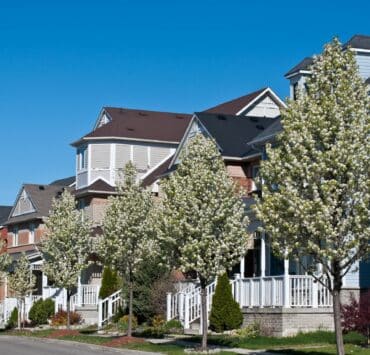In recent years, homeownership tenure in the United States has experienced a significant surge, with a notable impact on housing market dynamics. This shift, highlighted by a Redfin analysis, reveals intriguing insights into the factors driving this trend. Here’s more insights behind increase in homeowner tenure in the United States.
Aging in Place: A Major Contributor
One of the primary factors influencing the increase in homeowner tenure is the growing trend of older Americans choosing to age in place. As of 2023, nearly 40% of baby boomers have resided in their homes for at least two decades. Gen Xers also contribute significantly, with over one-third having stayed in the same home for a decade or more.
In contrast, millennials and Gen Zers exhibit shorter tenure periods, often driven by factors such as job changes and a younger age demographic. Less than 7% of millennials have lived in their homes for a decade or longer, reflecting a more transient lifestyle.
Changing Landscape Since the Early 2000s
Examining the historical context, the ease of obtaining mortgages in the early 2000s played a role in frequent moves. However, the current scenario is characterized by a more challenging housing market, making it difficult to find affordable homes, contributing to the extended homeowner tenure.
Financial Incentives and Policy Impact
Financial incentives, such as mortgage-free ownership among 54% of baby boomers, play a crucial role. The cost of homeownership for this group is relatively low, with many having mortgages at rates significantly lower than current market averages.
Moreover, certain state tax systems incentivize homeowners to stay put, with examples like Texas allowing property tax deferral for those over 65 and California’s Proposition 13 limiting property-tax increases.
Impact on Housing Inventory and Prices
The prolonged tenure of homeowners contributes to the ongoing shortage of housing inventory, particularly in regions like California, where homeowners tend to stay the longest. This scarcity, coupled with high housing costs, leads to rising home prices and poses challenges for first-time buyers.
According to Redfin’s analysis, empty-nest baby boomers own twice as many larger homes as millennials with kids, creating an obstacle for younger buyers entering the market.
Future Projections and Metro-Level Highlights
While homeowner tenure declined slightly from its 2020 peak due to the pandemic-induced moving frenzy, it is expected to remain relatively flat or see a slight increase. Metro-level highlights reveal Californian cities, particularly Los Angeles and San Jose, boast the longest homeowner tenure, while relatively affordable southern metros like Louisville and Las Vegas witness more frequent moves.
Metro-level summary: Homeowner tenure, 2023Median homeowner tenure, in years 41 most populous U.S. metros for which we have sufficient data |
|||||
| U.S. metro area | Median homeowner tenure (2023) | Median homeowner tenure (2022) | Median sale price (2023) | Median sale price, YoY change (2023) | Active listings, YoY change (2023) |
| Atlanta, GA | 8.9 | 8.7 | $378,795 | 4% | -20% |
| Baltimore, MD | 15.6 | 15.5 | $350,000 | 5% | -7% |
| Birmingham, AL | 9.6 | 9.7 | $280,000 | 4% | -2% |
| Buffalo, NY | 11.7 | 11.5 | $235,000 | 9% | -8% |
| Charlotte, NC | 8.5 | 8.3 | $375,000 | -3% | -6% |
| Chicago, IL | 15.2 | 15.3 | $306,500 | 8% | -19% |
| Cincinnati, OH | 13.3 | 13.4 | $265,000 | 8% | -21% |
| Cleveland, OH | 17.4 | 17.1 | $199,900 | 4% | -9% |
| Columbus, OH | 11.3 | 11.9 | $315,000 | 5% | -2% |
| Denver, CO | 9.3 | 8.8 | $550,000 | 0% | -2% |
| Detroit, MI | 13.2 | 14.1 | $170,000 | 6% | -8% |
| Hartford, CT | 13.4 | 13.2 | $327,950 | 15% | -28% |
| Jacksonville, FL | 10.0 | 10.3 | $372,112 | 4% | -9% |
| Las Vegas, NV | 8.0 | 7.6 | $420,000 | 5% | -31% |
| Los Angeles, CA | 18.7 | 18.2 | $850,000 | 7% | -14% |
| Louisville, KY | 7.4 | 6.9 | $251,000 | 5% | 2% |
| Memphis, TN | 16.5 | 16.2 | $257,990 | -1% | 15% |
| Miami, FL | 11.7 | 12.5 | $510,000 | 12% | 1% |
| Milwaukee, WI | 11.0 | 11.1 | $280,000 | 6% | -2% |
| Minneapolis, MN | 10.3 | 10.2 | $355,000 | 2% | -1% |
| Nashville, TN | 8.5 | 8.2 | $450,000 | 0% | -2% |
| New Orleans, LA | 15.6 | 15.1 | $265,000 | -5% | 26% |
| New York, NY | 15.4 | 15.4 | $700,000 | 8% | -15% |
| Oklahoma City, OK | 11.4 | 11.4 | $250,000 | 6% | 5% |
| Orlando, FL | 8.6 | 8.5 | $400,000 | 3% | 11% |
| Philadelphia, PA | 16.1 | 15.7 | $250,000 | -3% | -7% |
| Phoenix, AZ | 8.6 | 8.3 | $444,990 | 5% | -18% |
| Pittsburgh, PA | 15.5 | 15.3 | $217,000 | 10% | -3% |
| Portland, OR | 11.4 | 11.3 | $530,000 | 5% | -5% |
| Providence, RI | 16.3 | 15.6 | $447,500 | 10% | -12% |
| Raleigh, NC | 8.5 | 8.2 | $432,671 | 1% | -34% |
| Richmond, VA | 15.4 | 15.2 | $370,599 | 9% | -3% |
| Riverside, CA | 12.2 | 12.4 | $550,000 | 5% | -15% |
| Sacramento, CA | 11.6 | 11.9 | $560,000 | 8% | -15% |
| San Diego, CA | 15.0 | 15.4 | $840,000 | 10% | -16% |
| San Francisco, CA | 16.7 | 16.3 | $1,297,500 | -1% | -13% |
| San Jose, CA | 17.8 | 17.3 | $1,400,000 | 11% | -16% |
| Seattle, WA | 13.0 | 12.7 | $750,000 | 6% | -22% |
| Tampa, FL | 9.0 | 8.9 | $375,000 | 1% | 9% |
| Virginia Beach, VA | 11.9 | 12.7 | $330,000 | 6% | -5% |
| Washington, DC | 13.6 | 14.0 | $524,900 | 7% | -14% |
In conclusion, the intricate interplay of demographic shifts, economic factors, and policy incentives provides a comprehensive understanding of the evolving landscape of homeowner tenure in the United States. As the housing market continues to adapt, these insights become crucial for anticipating future trends.
Related posts:
 Realtors: Coronavirus Starts Slowing Down Housing Market
Realtors: Coronavirus Starts Slowing Down Housing Market
 How Companies Are Passing On Hope And Thriving With Innovation
How Companies Are Passing On Hope And Thriving With Innovation
 The Ultimate Guide for Successful Home Renovation Planning
The Ultimate Guide for Successful Home Renovation Planning
 When Will Be a Good Time to Buy a House in 2024: Unveiling the Ideal Season
When Will Be a Good Time to Buy a House in 2024: Unveiling the Ideal Season
 Best Home Warranty Companies: Your Top 12 Picks for 2024
Best Home Warranty Companies: Your Top 12 Picks for 2024



